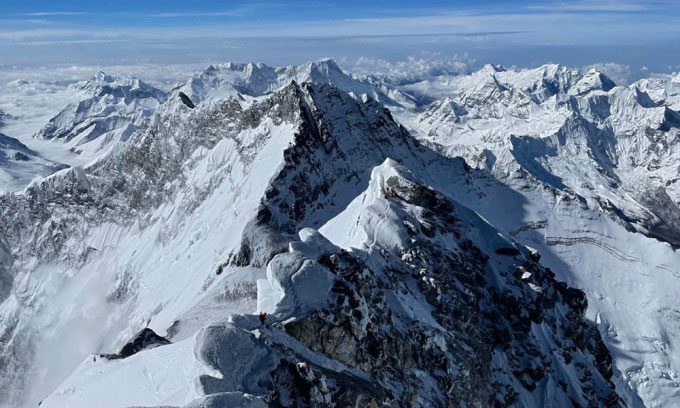A system of artificial intelligence developed by a team of Chinese scientists could assist in locating massive potential rare earth mineral deposits in the Himalayas.
Chinese geologists have discovered a huge potential rare earth mineral deposit in the Himalayas, which could bolster China’s position as a leading global supplier of rare earth elements. This mineral belt is believed to be over 1,000 km long, but pinpointing locations in such a remote and vast area could take years, if not decades, SCMP reported on June 21.

Locating and extracting minerals in the Himalayas is a significant challenge. (Photo: AFP)
A viable solution is the use of artificial intelligence (AI). Since 2020, a team of scientists from the China University of Geosciences has developed an AI system that can automatically process nearly all raw data collected by satellites and other means to locate rare earth deposits on the Tibetan Plateau.
“Rare earth metals are irreplaceable in industries such as new materials, renewable energy, defense technology, military applications, and information technology, becoming a crucial strategic resource in global competition,” Professor Zuo Renguang wrote in a study published in the journal Earth Science Frontiers last week.
The AI will search for a unique type of granite that has a lighter than usual coloration. This granite may contain rare earth elements such as niobium and tantalum, commonly used in high-tech products, and also holds a significant amount of lithium, a key component for electric vehicle production.
Chinese geologists have found such granite in various locations throughout the Himalayas, including around Mount Everest, but previously believed it contained no extractable materials. About a decade ago, they unexpectedly discovered the presence of rare earth elements and lithium in some nearby rock samples.
China currently has a major rare earth production facility in Inner Mongolia and other sites further south in provinces like Guangdong, Jiangxi, and Sichuan. However, scientists believe that the rare earth reserves in the Himalayas could equal or even exceed those in these regions, helping China assert its global position.
China once held a dominant position with approximately 43% of the world’s rare earth reserves in the 1980s and 1990s, but this number dropped to about 36.7% by 2021. Meanwhile, rare earth resources outside of China have significantly increased, rising from 40 million tons to 98 million tons.
Over two years ago, when Zuo’s team began developing the AI, the system was trained on a limited dataset, such as satellite images, to identify light-colored granite. Initially, the AI had an accuracy rate of about 60%, but the research team gradually expanded the system’s knowledge by improving the accuracy of the algorithms.
Additional datasets provided to the AI included data related to the chemical composition of rocks and minerals, magnetism, spectral data collected by aircraft, and geological maps of the Tibetan Plateau. They observed that the AI system could rapidly develop, achieving an accuracy rate of over 90% within a few months.





















































